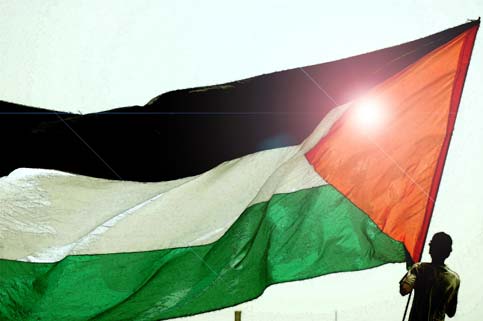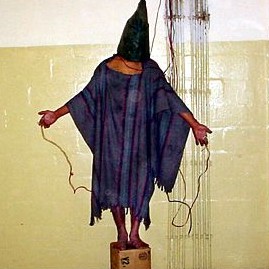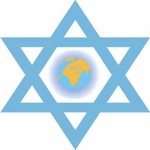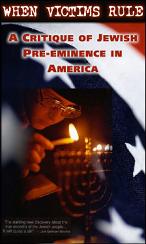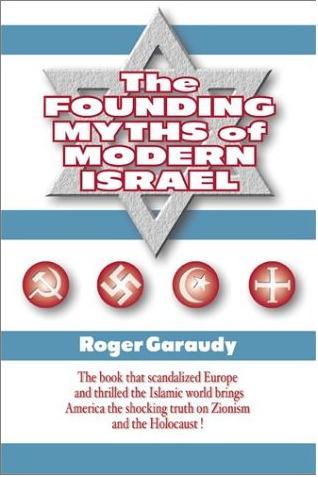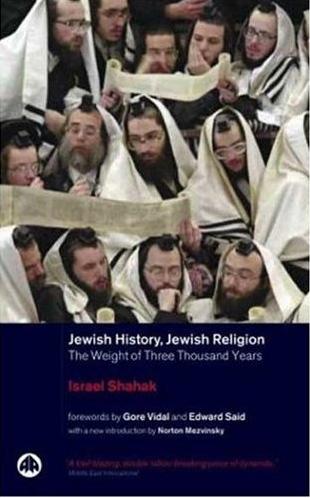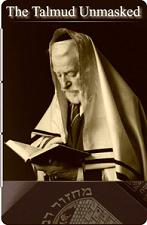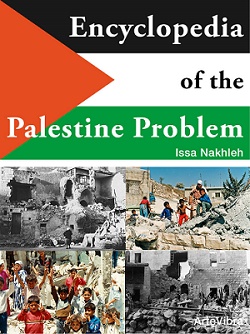http://acj.org/facts.htmJERUSALEM:
FACTS & FIGURES
I. Housing
Since 1967, more than 17,500 acres have been confiscated and annexed into the "Israeli-expanded" Jerusalem municipality by Israel from the surrounding West Bank. The majority of this land was owned by Palestinians. 38,500 housing units were built exclusively for Jews on this land and none for Palestinians.
In East Jerusalem itself, since 1990 11,602 units have been built exclusively for Jews and 565 for Palestinians, a mere 4.8 percent of the total.
Since 1967 Israel has expropriated more than 33 percent of East Jerusalem's land area (approx. 23,500 sq. km) from Palestinians. Another 54 percent of the land owned by Palestinians has been set aside for "public purposes." Palestinians in East Jerusalem can therefore live and build on only 13 percent of their land.
Between 1967 and 1991, 40,000 residential units were built for Israeli Jews in Jerusalem and only 555 for Palestinians.
In 1997, 16 Palestinian homes were destroyed in Jerusalem, bringing to 24 the total number of Jerusalem demolitions since the election of Prime Minister Netanyahu. Palestinians are forced to build without permits because Israel refuses to grant building permits to Palestinians.
To discourage Palestinian construction, large chunks of land are designated as "green zones" by the Jerusalem Municipality. These zones are then changed when Israeli Jews decide to build on these lands.
In 1967 there were no Israeli settlers in East Jerusalem. Today there are over 180,000. These settlers are illegal according to international law, as the Geneva Convention prohibits the transfer of the population of an occupying power into occupied territory. East Jerusalem is considered occupied territory according to UN resolutions, the European Union and official US government policy.
Palestinians are permitted to build homes no higher than two stories. Nearby Israeli residential settlements have buildings as high as eight stories.
According to official Israeli government statistics, the 205,000 Palestinians, who make up 30 percent of Jerusalem’s population, receive less than 10 percent of the municipal budget. That is, the city invests seven times as much on a Jewish resident as on a Palestinian resident.
Palestinian families in Jerusalem need new housing to expand their homes or build new ones. For every 20 permits for Israeli (Jewish) construction, one permit is issued for Palestinian construction.
Note: Figures provided by B’Tselem, the major Israeli human rights organization.
II. Residency
Israel has granted Palestinian residents of East Jerusalem the legal status of residents comparable to that granted foreign nationals who settle in Israel. Consequently, in the city of their birth, Israel treats Palestinians as foreigners. Meanwhile any Jew from any part of the world may settle in Jerusalem at any time.
Palestinian residents of Jerusalem who marry persons from outside the city, including West Bank Palestinians, must ask formal permission from the Israeli Interior Ministry for their spouses and children to live with them in Jerusalem. No such restrictions apply to Israeli Jews. In addition, a child whose father is not a resident of Jerusalem does not have the right to live there, even if his mother is a city resident.
In 1994, the Israeli Interior Ministry started to make the renewal of Palestinian residency in East Jerusalem conditional on whether the person's "center of life" was in the city, demanding proof - as judged by the Ministry - that he or she lived, worked or was educated in Jerusalem on a continual basis.
In 1997, 358 Palestinian Jerusalemites had their Jerusalem identity cards or residency rights removed. Since 1993, almost 1,000 have suffered the loss of identity cards or residency rights, among them Palestinians living in the city's West Bank suburbs, those residing abroad, and those who became citizens of foreign countries. None of these restrictions are imposed on Israeli Jews. Israel has also threatened to revoke the residency rights of Palestinian-Americans in Jerusalem unless they give up their U.S. citizenship. U.S. Consul Edward Abington said the U.S. Consulate has documented 72 cases of Palestinian-Americans who were told they must give up their U.S. citizenship.
Note: Figures provided by B’Tselem and the US Consulate in Jerusalem
III. Land
66% of "united" Jerusalem today is territory seized by force: 5% old Jordanian municipality, 61% West Bank territory (Sarah Kaminker, former member of the Jerusalem City Council).
Before 1948 Jewish ownership in that 66% was 3% (Jewish Settlement in Palestine: Jewish National Fund Head Office, 1948).
Jewish property in West Jerusalem before 1948 was 20% (same source as above).
35, 000 Palestinians were expelled from West Jerusalem in 1948 after which 3, 000 Jews were expelled from East Jerusalem (Meron Benvenisti, former Deputy Mayor of Jerusalem).
IV. Jerusalem and Israel's Closure Policy
Since March 1993, Israel has enforced a "closure" policy, effectively sealing Jerusalem off form tre West Bank and Gaza. Access is only granted with the issuance of an extremely hard-to-get temporary Israeli pass. This closure policy has resulted in the denial of hundreds of thousands Christian and Muslim West Bank and Gaza Palestinians access to their holy sites in Jerusalem, even during religious holidays.
a) Jerusalem is holy to Muslims because they believe:
Jerusalem was the first direction of prayer for Muslims before Mecca.
The Prophet Muhammad journeyed to Jerusalem before Mecca in a miraculous nocturnal journey, from where he ascended to Heaven.
The five daily prayers required of Muslims became canonical in Jerusalem after a conversation between the Prophet Muhammad and Moses, during his ascension to Heaven.
Jerusalem is the site of the Day of Resurrection.
Jerusalem is the site of the Last Judgment.
Jerusalem is the site of the emergence of the Anti-Christ.
Muslim rule in Jerusalem was uninterrupted (except for the 90 Crusader years) for 1200 years.
b) Due to its evolution out of Judaism and its incorporation of the Old Testament, Christians revere many of the same holy sites as Judaism. Jerusalem is holy to Christians because:
Jesus Christ was crucified, buried and he was raised from the dead there.
It is where Christ performed miracles and where his distinctive teachings were first proclaimed.
It is where the Last Supper took place.
It is where Christ was last seen by his followers, on the Mount of Olives, before ascending to Heaven.
It is the place where the Holy Spirit descended for the first time at Pentecost.
It is where Christ will return to defeat the Anti-Christ.
It is the site of the Day of Judgment and the Day of Resurrection.
V. Jerusalem and the UN:
Illegality of Israeli settlements in Jerusalem: The 4th Geneva Convention, of which Israel is a signatory, states in Article 49 prohibits in all cases transfer of part of the civilian population of the occupying power into the territory it occupies. In addition, the Convention prohibits destruction, seizure and confiscation of public or private properties in occupied territories.
The applicability of the Geneva Convention to 1967 Israeli-occupied territories has been asserted by the UN and by the International Committee of the Red Cross. The UN Security Council has reaffirmed the applicability of the Geneva Convention to the territories occupied in 1967, including Jerusalem, in 24 resolutions.
There have been 11 Security Council resolutions since 1967 censuring, condemning and deploring Israeli activities changing the status of Jerusalem. The Security Council has repeatedly declared that all measures taken by Israel to change the demographic composition, physical character, institutional structure or status of occupied territories, including Jerusalem, are null and void. (Resolutions 446, 425, 465)
The European Union, in its October 1996 meeting stated: "East Jerusalem is subject to the principles set out in the UN Security Council Resolution 242, notably the inaccessibility of the acquisition of territory by force." The United States voted for 242 and Israel accepted it.
VI. Common Jerusalem Myths
The UN General Assembly 1947 partition plan for Palestine was accepted by King Abdullah of Jordan and the Jewish leadership, and rejected by the rest of the Arab states, who attacked the emerging Israeli state:
While the official Jewish leadership accepted the partition plan the Zionist Revisionist camp and its 2 military wings, Irgun and Stern Gang did not. In addition, the official Jewish leadership did not accept the corpus seperatum for Jerusalem. It planned linking the envisaged Jewish state with Jerusalem. Since the corpus seperatum lay deep in the envisaged Palestinian state, military means was the only way to do so. Before the end of the British mandate and before the entry of the Arab armies (May 1948), Jewish forces launched 2 military offensives, one from Tel Aviv and one from the Jewish quarter in Jerusalem itself (December 1947-May 1948.) The second offensive resulted in the conquest of West Jerusalem, achieving the corridor to the coast. This corridor and Jewish control of West Jerusalem was achieved in violation of the partition resolution. This is why until today the international community including the United States have never explicitly recognized Israeli sovereignty over even West Jerusalem.
Note: See the Haganah’s Plan C and Plan Dalet (Plan D) for details of the military offensive launched from December 1947-May 15, 1948. The Haganah were the regular Jewish forces of the period.
Jordan attacked Israel in 1967 War, after which Israel defeated Jordan and conquered East Jerusalem:
True, Jordan did fire on Israel first, but these shots followed Israel's surprise attack on Egypt, already far advanced that morning of June 5, 1947. Jordan was bound by military alliance with Egypt to come to its aid if Egypt was attacked by Israel.
Jordan’s denial of access to Jews of the Western Wall between 1948 and 1967 is an example of Muslim intolerance:
Access to the Western Wall was a casualty of 1948, just like the ¾ million Palestinian refugees and their loss of properties and land in over 400 towns and villages was also a casualty. Also, denial of access to Jews of the Western Wall, 1948-1967, can be compared to the two million West Bank and Gaza Muslim and Christian Palestinians denied access to their holy sites in Jerusalem since Israel’s "closure" policy of 1993. Prior to 1948, there were never restrictions on access to Jews to the Western Wall during the more than 1,000 years of Muslim rule in Jerusalem.
Jerusalem is 3000 years old:
The correct age of the city is 5,000 years (Zev Vilnay, The Encyclopedia for the Knowledge of the Land of Israel). 3,000 years is only true as the time of the proclamation of King David as King of Jerusalem. David did not found Jerusalem; he occupied an already inhabited city (Bible & Zev Vinlay). Prior to David’s conquest, Jerusalem had been inhabited by Canaanites, Amorites and Jebusites. The Palestinians of today largely descended form these pre-Israelite peoples (DeLacy O’Leary, Arabia Before Muhammad: British anthropologist Sir James Frazer, Golden Bough; American scholar Charles Matthews, Palestine-Muhammadan Holy Land).
Of Jerusalem’s 5,000 years, Jews lived in the city as a majority for 1135 years. Jews actually ruled the city (during United and Divided Kingdom) for 600 years i.e. they were a majority in Jerusalem for 22% of the city’s history and rulers 12% of that time.
Copyright (c) 1998 The American Committee on JerusalemAfter Jews were expelled by the Romans, only the advent of Islam brought Judaism back to Jerusalem. Until 1850, Jerusalem’s Jews were a small minority; less than 1,000 in a population of 25,000 ie 4% of the population (A. Scholch, Palastina im Umbruch, 1986) The increase in their population came with the beginning of immigration in 1882.
Last modified: May 25, 1999
|
Races? Only one Human race United We Stand, Divided We Fall |
 |
No time to waste. Act now! Tomorrow it will be too late |
|

























